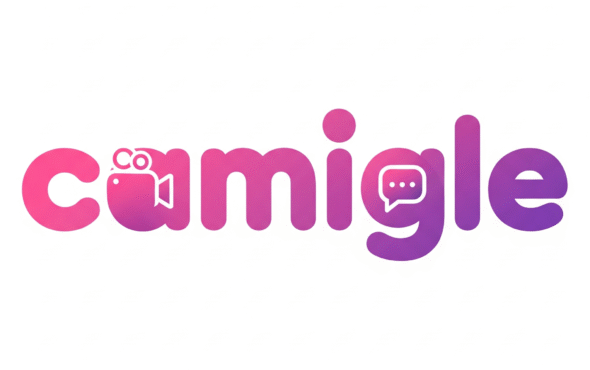Omegle Review
The notification was displayed on millions of screens worldwide. A simple tombstone graphic was shown with the inscription “Omegle 2009-2023.” Beneath it, a lengthy farewell message was presented from the platform’s founder. In November 2023, after 14 years of connecting strangers across the globe, one of the internet’s most notorious and beloved chat platforms was permanently shut down. The closure of Omegle was marked not by celebration, but by a complex mixture of relief and nostalgia that reflected the platform’s deeply contradictory legacy.
What began as an 18-year-old’s bedroom experiment in Vermont was transformed into a global phenomenon. The platform attracted over 70 million monthly visitors and was used by millions of daily users at its peak. However, the same anonymity and spontaneity that made Omegle revolutionary also made it a breeding ground for exploitation and abuse. The story of Omegle’s meteoric rise and dramatic fall serves as a cautionary tale about the double-edged nature of online anonymity and the challenges of content moderation at scale.
Understanding Omegle: The Platform That Changed Online Communication
The Concept Behind Anonymous Chat
Omegle was launched in March 2009 by then-18-year-old Leif K-Brooks. The platform operated under the simple motto “Talk to Strangers!” and was designed as a free, web-based online chat service that allowed users to socialize with others without requiring registration. The service randomly paired users in one-on-one chat sessions where they could chat anonymously through text or video.
The platform’s unique selling proposition was established through its complete anonymity. No names, friend lists, or conversation histories were stored, making finding people again purely a matter of chance. Users were identified only as “You” and “Stranger,” creating an environment where genuine, unfiltered conversations could theoretically take place without the social pressures associated with traditional social media platforms.
Key Features and Functionality
Random Pairing System
The core functionality of Omegle was centered around its random matching algorithm. Users were connected with strangers from around the world based on minimal preferences such as shared interests or geographic location. This roulette-style system was designed to create spontaneous and unpredictable social encounters.
Dual Communication Modes
Initially launched as a text-only platform, video chat capabilities were introduced in March 2010. This expansion significantly increased the platform’s appeal and usage, though it also introduced new safety challenges that would later contribute to its downfall.
Special Modes and Features
Several specialized features were developed over the platform’s lifetime. “Spy Mode” was implemented, allowing users to ask questions while two strangers conversed. A college chat feature was introduced that matched users based on university email domains. Additionally, interest-based matching was incorporated to help users find others with similar hobbies or topics of conversation.
The Platform’s Peak Performance and User Demographics
Statistical Overview of Omegle’s Success
The platform’s growth was remarkable by any measure. Within less than a month of its launch, Omegle garnered around 150,000 page views per day. By its peak years, the platform was attracting substantial global traffic and engagement.
Traffic and Engagement Metrics
| Metric | Value | Period |
|---|---|---|
| Monthly Visitors | 73 million | Peak Period |
| Daily Active Users | 3.35 million | 2023 |
| Average Session Duration | 5 minutes 8 seconds | All Devices |
| Bounce Rate | 58.98% | Mobile Devices |
| Pages Per Session | 2.39 | Average |
Revenue and Financial Performance
| Financial Metric | Estimated Value | Frequency |
|---|---|---|
| Annual Revenue | $216 million | Yearly |
| Monthly Revenue | $14.4 million | Monthly |
| Weekly Revenue | $4.5 million | Weekly |
| Net Worth | $504 million | Total Valuation |
| Annual Profit | $172.8 million | Yearly |
Geographic and Demographic Distribution
| Region | Percentage | User Demographics |
|---|---|---|
| United States | 29.93% | Primary Market |
| India | Second highest | Growing Market |
| United Kingdom | Third highest | Established Market |
| Germany | Significant | European Market |
| Australia | Notable | Asia-Pacific Region |
The platform’s user demographics revealed interesting patterns. Male users comprised 66.55% of the user base, while female users accounted for 33.45%. The largest age group was represented by users aged 18-24 years, making up 37.45% of the total user base. Users aged 65 and above represented the smallest demographic at just 3.94%.
The Dark Side: Safety Concerns and Exploitation Issues
Moderation Challenges and Inadequate Safety Measures
Despite its popularity, Omegle faced persistent and escalating safety concerns throughout its existence. The platform’s commitment to anonymity made effective moderation extremely challenging. Reports indicated that the platform employed only three human moderators for video chats and one moderator for text chats, a woefully inadequate number given its massive user base.
The lack of robust age verification systems was identified as a critical flaw. Originally, 13-year-olds could use the website with parental permission, though this rule was rarely enforced. The age restriction was updated to 18 years and older in 2022, but the damage had already been done, and the new policy proved equally difficult to enforce.
Criminal Activity and Legal Consequences
The platform became associated with numerous criminal cases and exploitation incidents. Over 50 cases involving predators were reported in connection with Omegle activities. BBC investigations highlighted more than 50 cases of sexual abuse involving minors across the world that took place on Omegle since 2021.
Several high-profile criminal cases were directly linked to the platform. In 2020, a Canadian teacher was arrested after broadcasting child pornography on Omegle. An Australian man was arrested in 2021 for allegedly using the platform to advertise his search for child exploitation. These incidents demonstrated the platform’s vulnerability to misuse by malicious actors.
Reporting and Response Systems
The platform’s response to abuse reports was criticized as inadequate. Omegle offered no in-service option to report abuse, and there were no effective measures to prevent minors from connecting with adult predators. The platform’s approach to handling inappropriate content was reactive rather than proactive, relying primarily on user complaints and automated systems that proved insufficient for the scale of the problems.
Frequently Asked Questions
Why Was Omegle Shut Down?
The shutdown of Omegle was precipitated by mounting legal pressures and unsustainable operational challenges. The platform faced a $22 million lawsuit filed by a woman who was sexually exploited as a child on the platform. The lawsuit alleged that Omegle knowingly allowed the pairing of minors with predators. The case was settled out of court, with the shutdown being a condition of the settlement agreement. Founder Leif K-Brooks stated that operating Omegle was “no longer sustainable, financially nor psychologically.”
What Were the Major Safety Issues on Omegle?
The platform suffered from numerous safety issues that proved impossible to adequately address. These included the lack of effective age verification systems, insufficient moderation resources, and the absence of robust reporting mechanisms. The platform’s anonymous nature made it attractive to predators seeking to exploit vulnerable users, particularly minors. Over 608,000 reports of suspected child sexual abuse material were filed by Omegle to the National Center for Missing and Exploited Children in 2022 alone.
How Popular Was Omegle Before Its Closure?
At its peak, Omegle attracted approximately 70 million monthly visitors and had over 3.35 million daily active users. The platform generated an estimated $216 million in annual revenue and had a net worth valued at $504 million. Despite its controversial nature, the platform maintained significant user engagement, with users spending an average of over 5 minutes per session and viewing multiple pages during their visits.
What Legal Actions Led to Omegle’s Demise?
Multiple legal challenges contributed to the platform’s closure. The most significant was the lawsuit filed by A.M., a woman who was exploited as a child on the platform. The case alleged that Omegle’s business model facilitated child exploitation and that the platform failed to implement adequate safety measures. Additional legal pressures came from regulatory bodies in the UK and European Union, which demanded stricter content moderation and safety implementations that proved too costly for the platform to maintain.
Did Omegle Have Any Positive Impact?
Despite its problems, Omegle did provide positive experiences for some users. The platform was used by people to explore foreign cultures, seek advice from impartial third parties, and alleviate feelings of loneliness and isolation. Some users formed meaningful connections and friendships through the platform. However, these positive outcomes were overshadowed by the significant harm caused to vulnerable users, particularly minors.
What Alternatives Exist After Omegle’s Shutdown?
Following Omegle’s closure, numerous alternative platforms have emerged to fill the void in the random video chat market. These include Chatroulette, CamSurf, Tinychat, and various other services that offer similar functionality with enhanced safety measures. Many of these alternatives have learned from Omegle’s failures and implement more robust moderation systems, age verification processes, and user safety features.
The Superior Alternative: Camigle
Addressing Omegle’s Fatal Flaws
The closure of Omegle has created an opportunity for platforms like Camigle to provide users with the excitement of random video chatting while prioritizing safety, security, and user experience. Camigle represents the evolution of random chat platforms, incorporating lessons learned from Omegle’s failures while maintaining the spontaneity and global connectivity that made the concept appealing.
Advanced Safety and Moderation Systems
Unlike Omegle’s inadequate moderation resources, Camigle employs comprehensive safety measures designed to protect all users. Advanced AI-powered content moderation is combined with human oversight to ensure inappropriate content is quickly identified and removed. Robust age verification systems prevent minors from accessing the platform, addressing one of Omegle’s most critical failures.
Enhanced User Experience and Features
Camigle offers superior functionality compared to what Omegle provided. The platform includes advanced matching algorithms that consider user preferences and interests, resulting in more meaningful connections. High-quality video and audio streaming ensure clear communication, while intuitive interface design makes the platform accessible to users of all technical skill levels.
Transparent Policies and Ethical Operations
The platform operates with complete transparency regarding its policies, safety measures, and data handling practices. Unlike Omegle’s secretive approach to financial and operational details, Camigle provides clear information about its terms of service, privacy policies, and community guidelines. Users understand exactly what to expect and how their data is protected.
Global Community with Local Safety
Camigle maintains the global reach that made Omegle appealing while implementing location-appropriate safety measures and compliance with international regulations. The platform works proactively with law enforcement agencies and child safety organizations to ensure the highest standards of user protection.
The Future of Safe Random Video Chatting
Learning from Omegle’s Legacy
The story of Omegle serves as both a cautionary tale and a roadmap for improvement. The platform’s ability to connect strangers across cultural and geographic boundaries demonstrated the positive potential of random video chatting. However, its failure to adequately protect vulnerable users, particularly children, highlighted the absolute necessity of robust safety measures and responsible platform governance.
The Path Forward with Camigle
Camigle represents the next generation of random video chat platforms—one that prioritizes user safety without sacrificing the excitement of meeting new people. The platform’s comprehensive approach to moderation, verification, and user protection ensures that the positive aspects of random video chatting can be enjoyed without the risks that plagued Omegle.
By choosing Camigle, users gain access to a platform that has learned from the past while building toward a safer future. The combination of advanced technology, ethical operations, and genuine commitment to user welfare creates an environment where meaningful connections can flourish without compromising safety or security.
Your Next Step Toward Safe Connections
The closure of Omegle marked the end of an era, but it also represents the beginning of something better. Camigle stands ready to provide the global connectivity and spontaneous encounters that users loved about Omegle, but with the safety measures and ethical standards that were so desperately lacking.
Don’t let the failures of the past prevent you from experiencing the joy of meeting new people from around the world. Join Camigle today and discover how random video chatting should be—safe, exciting, and genuinely focused on creating positive human connections.
Your next meaningful conversation is just one click away, and with Camigle, you can be confident it will happen in a safe, protected environment designed with your wellbeing in mind.







